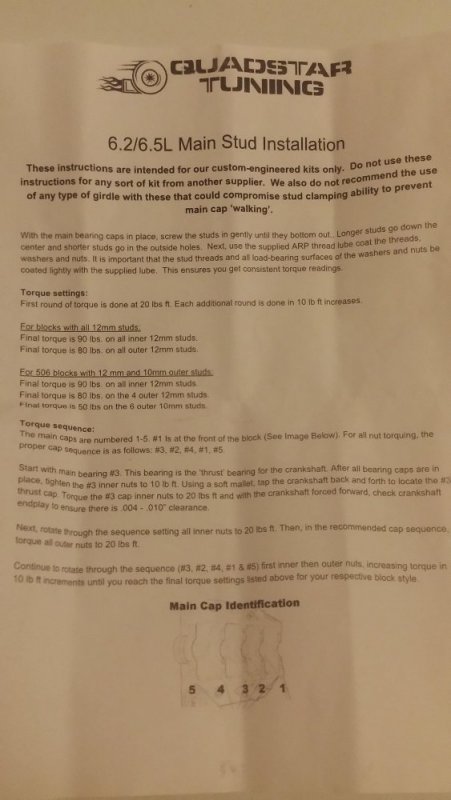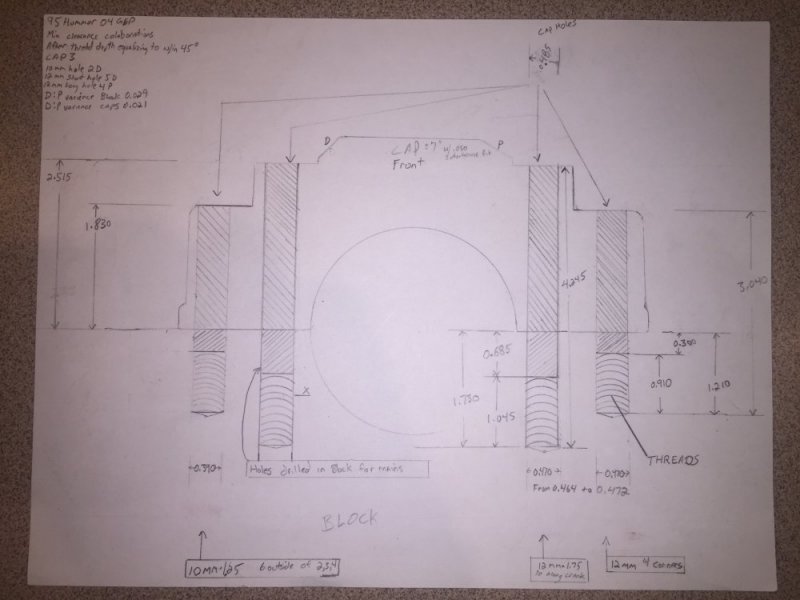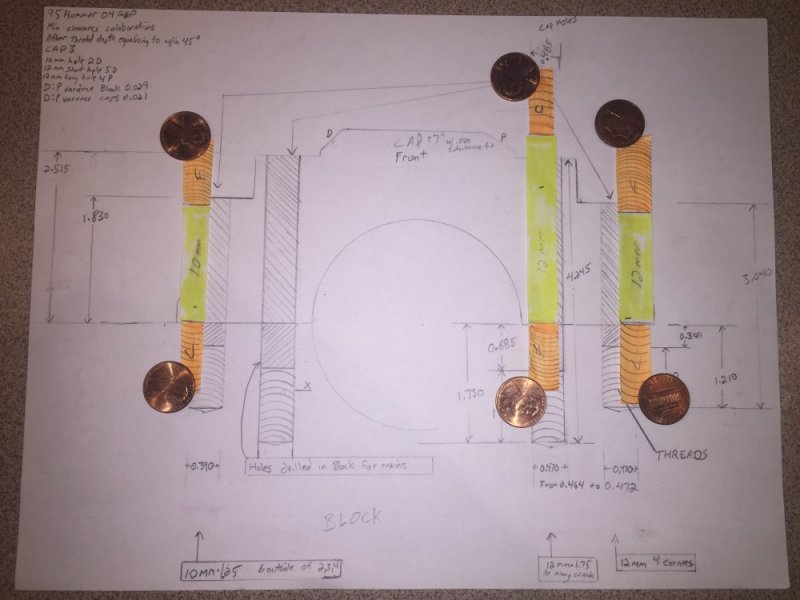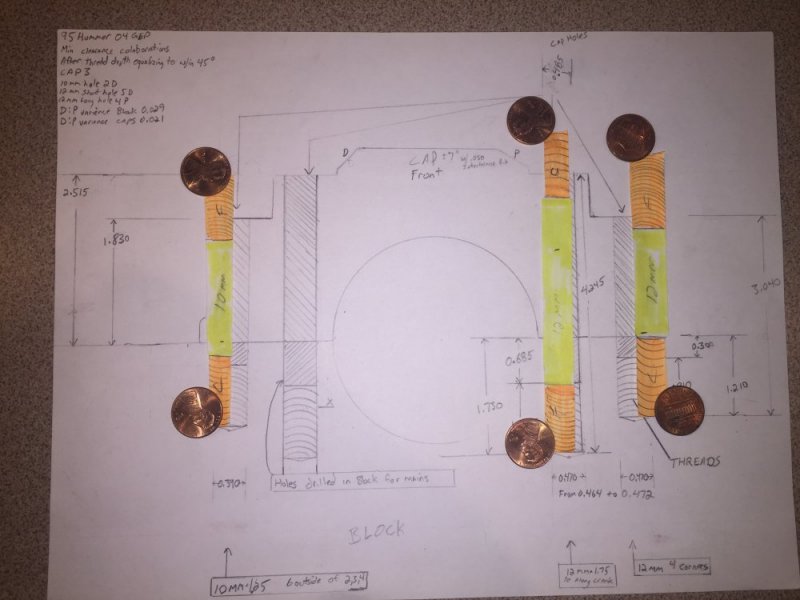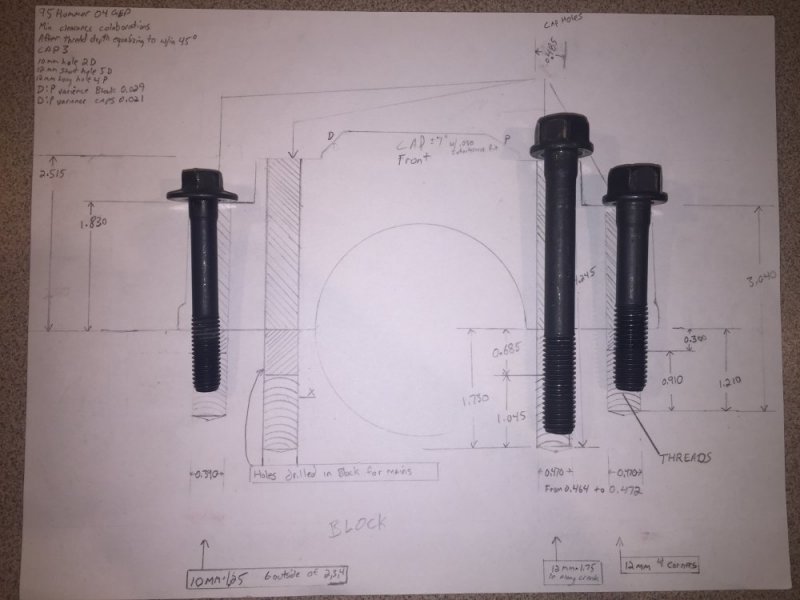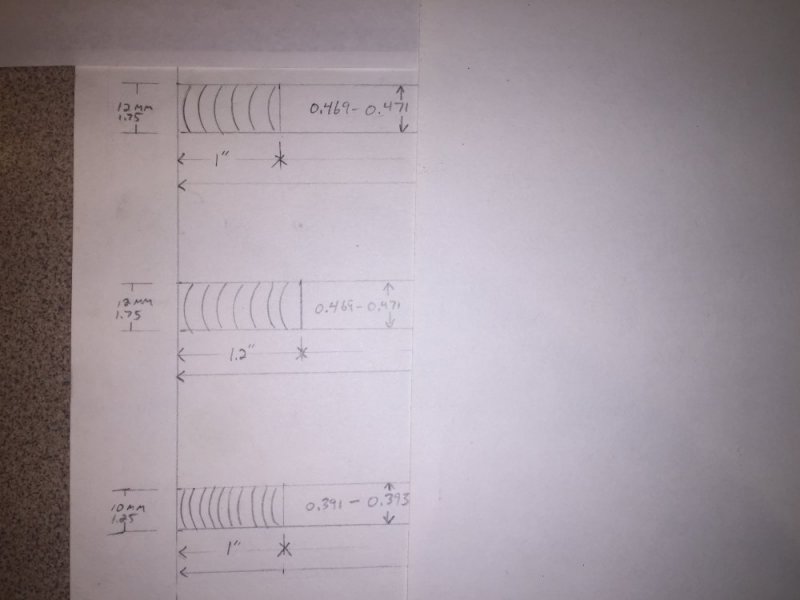Will L.
Well-Known Member
Anybody save their ARP main stud instruction sheet? Trying to get the block to the machinist today...
I got my latest installment if Leroydiesel.com parts this week.
This one was ops extension hose, head studs and main studs.
But as luck would have it, mainstuds sheet is mia.
I called Leroy, no luck- usually inside box. Left messages with quadstar and ARP.
I spoke months ago to John @ quadstar, he took a block to ARP after the many discussions of which studs to use. They worked out the best ones and he said thats why he holds exclusively the ARP main kit- his expense with ARP. So I am not sure ARP will release info until any exclusivity's are done.
Back when i was playing 6.5 go fast, we had a automotive mechanical engineer in the group. He determined stud sizes, material, tempur, and torque for us. I learned way back then too loose is obviously no good and too tight causes all kinds of wacky issues. If a person can repull the bearings and examine after break in, they can actually “tune” the desired torque based on wear patten. But I don’t want back in this engine ever if at all possible. So...
That is why I spent 4 bills on main studs instead of just doing the “X” is good enough factor.
ARP has a generic torque chart (see pic) but it you notice- ARP calls for 90 on the head studs. (Too much torque causes issues long term). But look at the possible loads the stud can handle. WAY more than the heads can handle.
Infact, I used it when I made my homemade studs for the i take manifold adapting van intake to truck block. Got no where near close to minimum and DESTROYED the gasket and cracked the first intake I had. So lessons of the past relearned.
I dont want “well I used X and it is still running good”. I could guess myself and just buy one-sy two-sy and saved a lot trying the learning game.
Post here, pm me, whatever you prefer-
THANKS!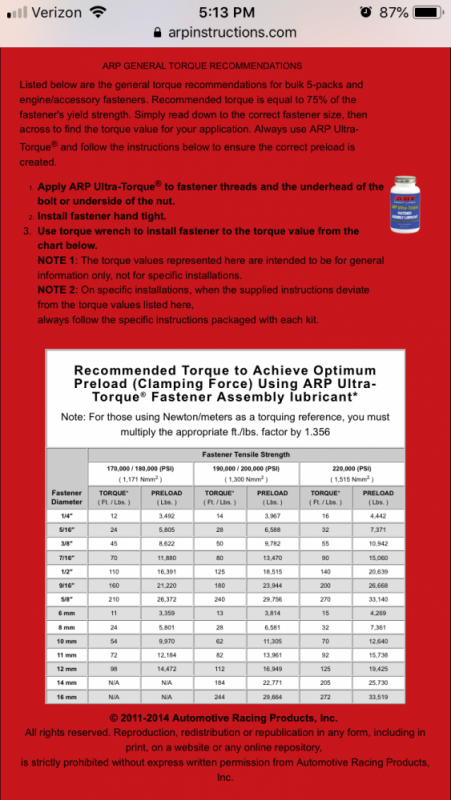
The headstud instruction sheet is example of what all their sheets look like, and also to show the torque ARP says vs the generic sheet.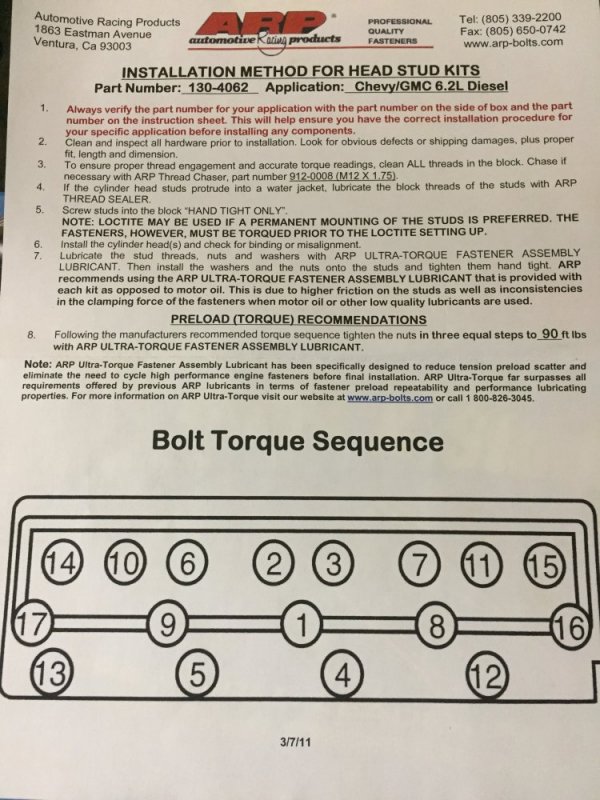
I got my latest installment if Leroydiesel.com parts this week.
This one was ops extension hose, head studs and main studs.
But as luck would have it, mainstuds sheet is mia.
I called Leroy, no luck- usually inside box. Left messages with quadstar and ARP.
I spoke months ago to John @ quadstar, he took a block to ARP after the many discussions of which studs to use. They worked out the best ones and he said thats why he holds exclusively the ARP main kit- his expense with ARP. So I am not sure ARP will release info until any exclusivity's are done.
Back when i was playing 6.5 go fast, we had a automotive mechanical engineer in the group. He determined stud sizes, material, tempur, and torque for us. I learned way back then too loose is obviously no good and too tight causes all kinds of wacky issues. If a person can repull the bearings and examine after break in, they can actually “tune” the desired torque based on wear patten. But I don’t want back in this engine ever if at all possible. So...
That is why I spent 4 bills on main studs instead of just doing the “X” is good enough factor.
ARP has a generic torque chart (see pic) but it you notice- ARP calls for 90 on the head studs. (Too much torque causes issues long term). But look at the possible loads the stud can handle. WAY more than the heads can handle.
Infact, I used it when I made my homemade studs for the i take manifold adapting van intake to truck block. Got no where near close to minimum and DESTROYED the gasket and cracked the first intake I had. So lessons of the past relearned.
I dont want “well I used X and it is still running good”. I could guess myself and just buy one-sy two-sy and saved a lot trying the learning game.
Post here, pm me, whatever you prefer-
THANKS!

The headstud instruction sheet is example of what all their sheets look like, and also to show the torque ARP says vs the generic sheet.


